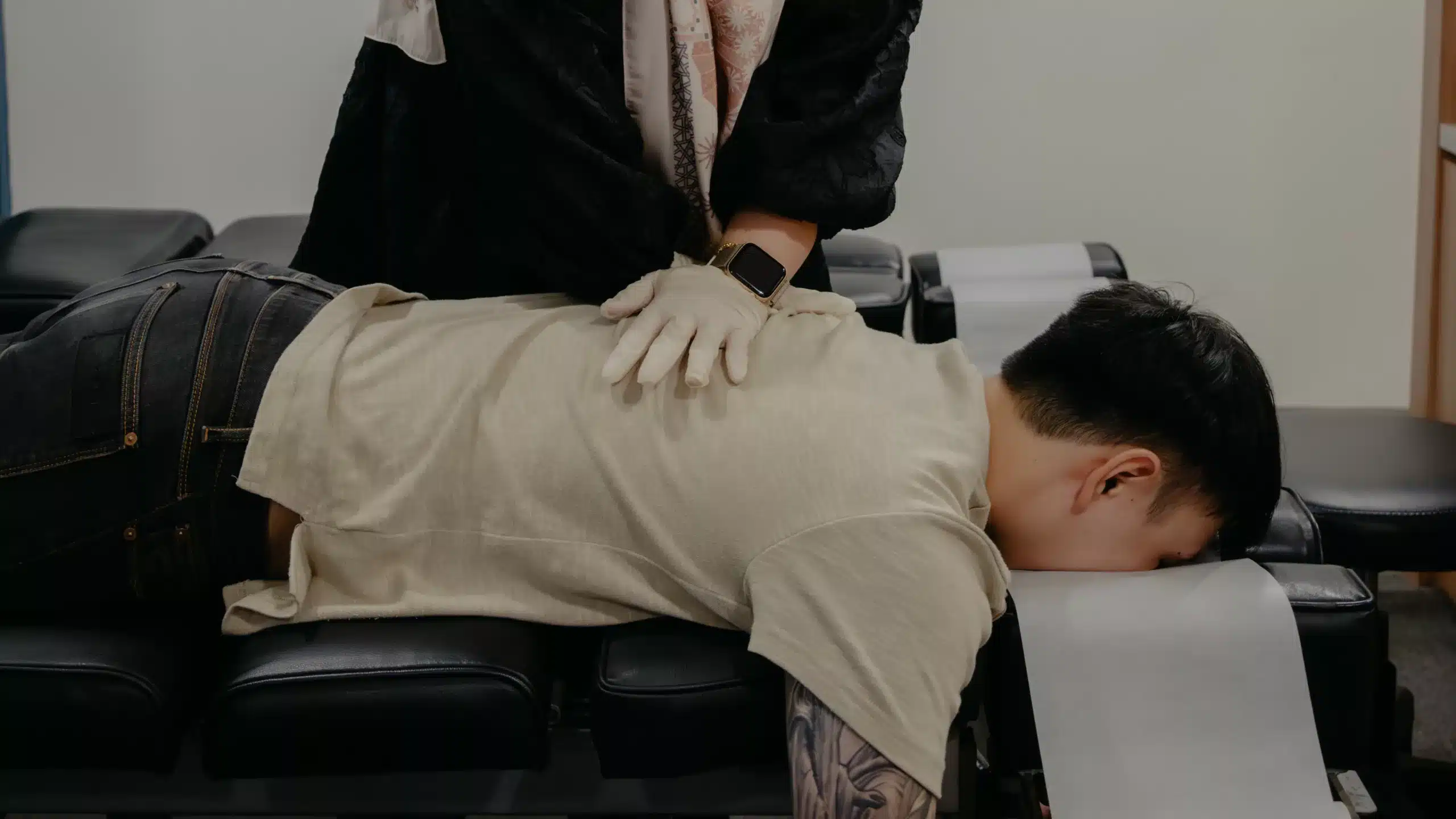When it comes to managing musculoskeletal issues, Singapore offers a diverse range of approaches, including chiropractic care and bone setting. These two methods have garnered attention for their ability to alleviate pain and improve alignment. In this blog post, we’ll dive into the key differences, benefits, and considerations associated with each practice.
What is bone setting?
Bone setting, a practice rooted in tradition, involves the skillful manipulation of bones and joints to address musculoskeletal problems. It’s a technique that has been passed down through generations and is often utilised to treat injuries, dislocations, and joint misalignments. The hands-on approach of bone setting aims to restore proper alignment, alleviate pain, and enhance mobility.
What are the benefits of bone setting?
Bone setting is favoured by many for its non-invasive nature and potential to provide quick relief. This method is believed to promote natural healing processes and restore balance to the body without resorting to surgical procedures. Patients often turn to bone setting for acute pain management and to regain normal function in their daily lives.
How is bone setting carried out?
Bone setting practitioners employ hands-on techniques to manipulate bones and joints gently. By applying controlled pressure and specific movements, they work to gently shift misaligned structures back into their proper positions. The goal is to facilitate the body’s natural ability to heal and adapt.
How does chiropractic approach differ from traditional bone setting?

Chiropractors focus on the spine and how it affects the nervous system. They use precise adjustments to the spine to improve overall health, believing that a well-aligned spine can help the body heal itself and reduce pain. Chiropractic care often involves a more systematic and diagnostic approach, with the use of tools and technology like X-rays to assess and tailor plans.
On the other hand, traditional bone setting, on the other hand, is a centuries-old practice that involves manually manipulating bones and joints to address musculoskeletal issues. It’s often rooted in cultural and traditional methods, with practitioners relying on their hands-on skills and experience to realign bones and relieve pain.
If you’re looking for other similar ways to seek for pain relief, physiotherapy is one good way to address any aches and pains you might have.
Can chiropractic care provide effective solutions for musculoskeletal alignment?
Absolutely. Chiropractic care has gained recognition for its potential to address a wide range of musculoskeletal issues, from back pain and migraines to joint discomfort. By aligning the spine and promoting a balanced nervous system, chiropractic adjustments aim to enhance the body’s ability to heal itself.
Which approach offers lasting relief: Chiropractic care or bone setting?
The effectiveness of both chiropractic care and bone setting largely depends on the individual’s condition, preferences, and the practitioner’s expertise. Some individuals may find longer-lasting relief through chiropractic care due to its focus on the spine’s impact on the nervous system.
What are the benefits of chiropractic care as compared to bone setting?
Chiropractic care provides a holistic perspective on musculoskeletal health. By addressing spinal alignment and nervous system function, chiropractic adjustments may lead to not only pain relief but also improved overall wellness. Additionally, chiropractors often use x-rays and advanced diagnostic tools to tailor plans to each patient’s unique needs.
Can chiropractic sessions excel in musculoskeletal issues compared to bone setting?
Chiropractic care’s systematic approach to spinal health has gained traction in the realm of musculoskeletal work. However, it’s essential to recognise that both chiropractic care and bone setting have their strengths, and choosing between the two may require consulting with practitioners from both fields.
How do we choose between chiropractic care and bone setting?
Chiropractic care offers a comprehensive approach to musculoskeletal issues, targeting not only the symptoms but also the underlying causes. This approach can be particularly appealing for those seeking a long-term solution and a deeper understanding of their body’s mechanics.
Bone setting’s historical significance and non-invasive nature make it a preferred choice for individuals who lean towards traditional methods of healing. It can provide quick relief for acute injuries and misalignments.
In addition, it is still highly recommended to consult both bone setting and chiropractic practitioners to make a more informed decision on which practice would be more suitable to your needs.
Where can you find bone setting and chiropractic practitioners in Singapore?
In Singapore, bone setting practitioners can be found in various traditional healing centres, these practitioners have honed their skills through years of experience and training.
For chiropractic practitioners, Chiropractic Singapore is an option of if you’re looking for to try out a chiropractic session! Book a consultation with us today!

Navigating musculoskeletal health in Singapore
In conclusion, both chiropractic care and bone setting offer distinct approaches to addressing musculoskeletal issues. Whether you choose the systematic approach of chiropractic care or opt for the traditional practices of bone setting, the ultimate goal remains the same: restoring alignment, alleviating pain, and enhancing your overall quality of life. Consulting with practitioners from both fields and exploring your options will help you make an informed decision that suits your needs and preferences.
FAQs
What are some bone setting techniques?
Bone setting techniques can vary depending on the practitioner’s training and the specific musculoskeletal issue being addressed. However, here are some common bone setting techniques that practitioners may use:
Manual manipulation: This is the core technique in bone setting. Practitioners use their hands to gently manipulate and realign bones and joints. They apply controlled pressure and specific movements to coax misaligned structures back into their proper positions.
Traction: Traction involves stretching the affected area to relieve pressure on joints or to help reset them. It’s often used for conditions like dislocated joints or spinal misalignments.
Massage: Soft tissue massage is sometimes incorporated into bone setting to relax muscles and improve blood flow in the affected area. This can help reduce pain and inflammation.
Heat and cold therapy: Some bone setters use heat and cold therapy to prepare the muscles and joints for manipulation. Heat can relax muscles, while cold can reduce inflammation.
Splinting or bracing: In cases of more severe injuries or fractures, bone setters may use splints or braces to immobilise the affected area while it heals.
Herbal remedies: In traditional bone setting practices, herbal remedies may be applied topically to reduce pain and inflammation.
It’s important to note that the specific techniques used can vary from one bone setter to another, and some practitioners may have their own unique methods or combinations of these techniques based on their training and experience. Additionally, the choice of technique depends on the nature of the injury or misalignment being treated. Always consult with a qualified and experienced bone setter for your specific condition.
Is bone setting painful?
Bone setting is designed to be gentle and minimally invasive. While some discomfort might be experienced during the manipulation, it’s usually brief and followed by relief!











